1. Broelsch CE, Burdelski M, Rogiers X, Gundlach M, Knoefel WT, Langwieler T, et al. Living donor for liver transplantation. Hepatology. 1994; 20(1 Pt 2):49S–55S. PMID:
8005580.

2. Jurim O, Shackleton CR, McDiarmid SV, Martin P, Shaked A, Millis JM, et al. Living-donor liver transplantation at UCLA. Am J Surg. 1995; 169:529–532. PMID:
7538267.

3. Ishizaki M, Kaibori M, Matsui K, Kwon AH. Change in donor quality of life after living donor liver transplantation surgery: a single-institution experience. Transplant Proc. 2012; 44:344–346. PMID:
22410012.

4. Rhu J, Kim JM, Choi GS, Kwon CH, Joh JW, Soubrane O. Laparoscopy of hepatocellular carcinoma is helpful in minimizing intra-abdominal adhesion during salvage transplantation. Ann Surg Treat Res. 2018; 95:258–266. PMID:
30402444.

5. Carroll IR, Angst MS, Clark JD. Management of perioperative pain in patients chronically consuming opioids. Reg Anesth Pain Med. 2004; 29:576–591. PMID:
15635517.

6. Ko JS, Choi SJ, Gwak MS, Kim GS, Ahn HJ, Kim JA, et al. Intrathecal morphine combined with intravenous patient-controlled analgesia is an effective and safe method for immediate postoperative pain control in live liver donors. Liver Transpl. 2009; 15:381–389. PMID:
19326422.

7. Gordon DB, Stevenson KK, Griffie J, Muchka S, Rapp C, Ford-Roberts K. Opioid equianalgesic calculations. J Palliat Med. 1999; 2:209–218. PMID:
15859817.

8. Stark PA, Myles PS, Burke JA. Development and psychometric evaluation of a postoperative quality of recovery score: the QoR-15. Anesthesiology. 2013; 118:1332–1340. PMID:
23411725.
9. Kleif J, Waage J, Christensen KB, Gögenur I. Systematic review of the QoR-15 score, a patient-reported outcome measure measuring quality of recovery after surgery and anaesthesia. Br J Anaesth. 2018; 120:28–36. PMID:
29397134.
10. Bang SR, Ahn HJ, Kim GS, Yang M, Gwak MS, Ko JS, et al. Predictors of high intraoperative blood loss derived by simple and objective method in adult living donor liver transplantation. Transplant Proc. 2010; 42:4148–4150. PMID:
21168648.

11. Takeishi K, Shirabe K, Yoshida Y, Tsutsui Y, Kurihara T, Kimura K, et al. Correlation between portal vein anatomy and bile duct variation in 407 living liver donors. Am J Transplant. 2015; 15:155–160. PMID:
25521764.

12. Rhu J, Choi GS, Kwon CH, Kim JM, Joh JW. Learning curve of laparoscopic living donor right hepatectomy. Br J Surg. 2020; 107:278–288. PMID:
31652003.

13. Rhu J, Choi GS, Kim JM, Joh JW, Kwon CH. Feasibility of total laparoscopic living donor right hepatectomy compared with open surgery: comprehensive review of 100 cases of the initial stage. J Hepatobiliary Pancreat Sci. 2020; 27:16–25. PMID:
31271522.

14. Kwon CH, Choi GS, Kim JM, Cho CW, Rhu J, Soo Kim G, et al. Laparoscopic donor hepatectomy for adult living donor liver transplantation recipients. Liver Transpl. 2018; 24:1545–1553. PMID:
30021060.

15. Kwon CH, Choi GS, Joh JW. Laparoscopic right hepatectomy for living donor. Curr Opin Organ Transplant. 2019; 24:167–174. PMID:
30676401.

16. Jeong JS, Wi W, Chung YJ, Kim JM, Choi GS, Kwon CH, et al. Comparison of perioperative outcomes between pure laparoscopic surgery and open right hepatectomy in living donor hepatectomy: propensity score matching analysis. Sci Rep. 2020; 10:5314. PMID:
32210359.

17. Park J, Kwon DC, Choi GS, Kim SJ, Lee SK, Kim JM, et al. Safety and risk factors of pure laparoscopic living donor right hepatectomy: comparison to open technique in propensity score-matched analysis. Transplantation. 2019; 103:e308–e316. PMID:
31283680.

18. Park J, Kwon CH, Choi GS, Lee SK, Kim JM, Oh J, et al. One-year recipient morbidity of liver transplantation using pure laparoscopic versus open living donor right hepatectomy: propensity score analysis. Liver Transpl. 2019; 25:1642–1650. PMID:
31271699.

19. Wu CL, Rowlingson AJ, Partin AW, Kalish MA, Courpas GE, Walsh PC, et al. Correlation of postoperative pain to quality of recovery in the immediate postoperative period. Reg Anesth Pain Med. 2005; 30:516–522. PMID:
16326335.

20. Nagai S, Brown L, Yoshida A, Kim D, Kazimi M, Abouljoud MS. Mini-incision right hepatic lobectomy with or without laparoscopic assistance for living donor hepatectomy. Liver Transpl. 2012; 18:1188–1197. PMID:
22685084.

21. Demirbas T, Bulutcu F, Dayangac M, Yaprak O, Guler N, Oklu L, et al. Which incision is better for living-donor right hepatectomy? Midline, J-shaped, or Mercedes. Transplant Proc. 2013; 45:218–221. PMID:
23375303.

22. Liu Q, Liu F, Ding J, Wei Y, Li B. Surgical outcomes and quality of life between laparoscopic and open approach for hepatic hemangioma: a propensity score matching analysis. Medicine (Baltimore). 2019; 98:e14485. PMID:
30732219.
23. Buell JF, Thomas MT, Rudich S, Marvin M, Nagubandi R, Ravindra KV, et al. Experience with more than 500 minimally invasive hepatic procedures. Ann Surg. 2008; 248:475–486. PMID:
18791368.

24. Kim WJ, Kim KH, Kim SH, Kang WH, Lee SG. Laparoscopic versus open liver resection for centrally located hepatocellular carcinoma in patients with cirrhosis: a propensity score-matching analysis. Surg Laparosc Endosc Percutan Tech. 2018; 28:394–400. PMID:
30180138.

25. Nguyen KT, Gamblin TC, Geller DA. World review of laparoscopic liver resection: 2,804 patients. Ann Surg. 2009; 250:831–841. PMID:
19801936.
26. Topal B, Fieuws S, Aerts R, Vandeweyer H, Penninckx F. Laparoscopic versus open liver resection of hepatic neoplasms: comparative analysis of short-term results. Surg Endosc. 2008; 22:2208–2213. PMID:
18622562.

27. Yoon YI, Kim KH, Kang SH, Kim WJ, Shin MH, Lee SK, et al. Pure laparoscopic versus open right hepatectomy for hepatocellular carcinoma in patients with cirrhosis: a propensity score matched analysis. Ann Surg. 2017; 265:856–863. PMID:
27849661.
28. Artinyan A, Nunoo-Mensah JW, Balasubramaniam S, Gauderman J, Essani R, Gonzalez-Ruiz C, et al. Prolonged postoperative ileus: definition, risk factors, and predictors after surgery. World J Surg. 2008; 32:1495–1500. PMID:
18305994.
29. Kitajima T, Kaido T, Iida T, Seo S, Taura K, Fujimoto Y, et al. Short-term outcomes of laparoscopy-assisted hybrid living donor hepatectomy: a comparison with the conventional open procedure. Surg Endosc. 2017; 31:5101–5110. PMID:
28444493.

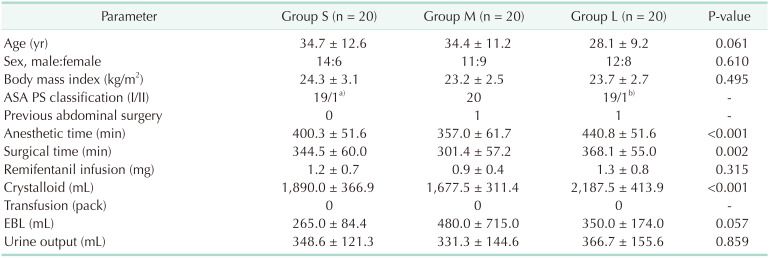
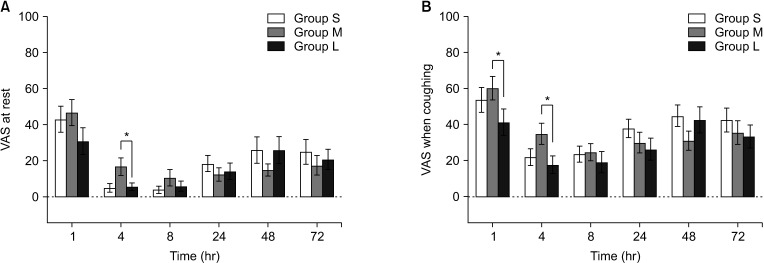
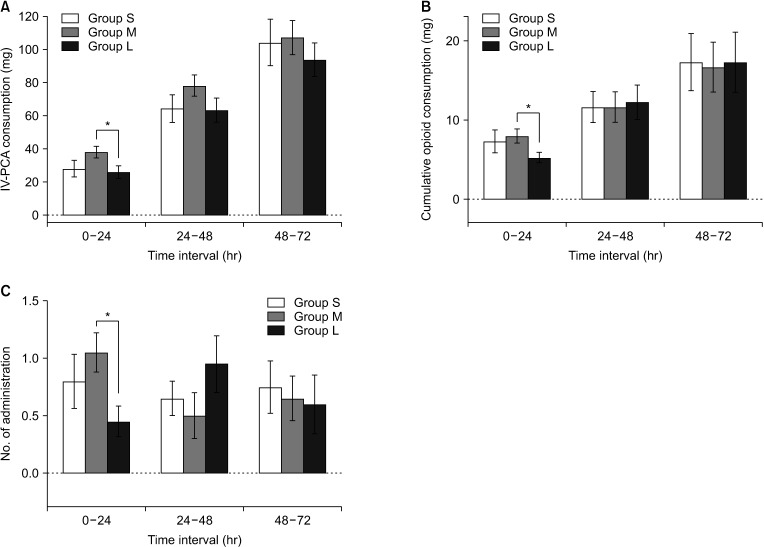
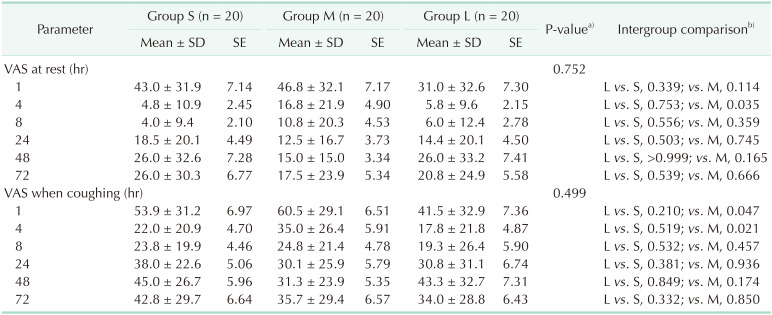
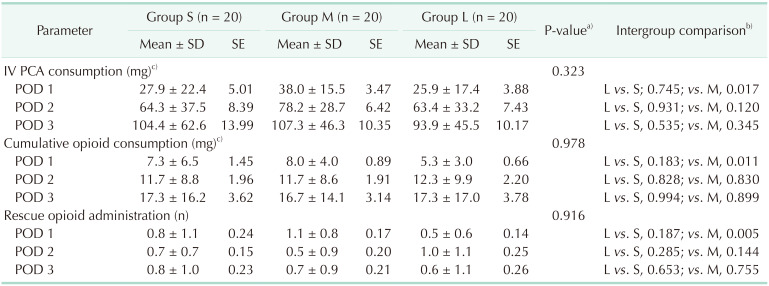
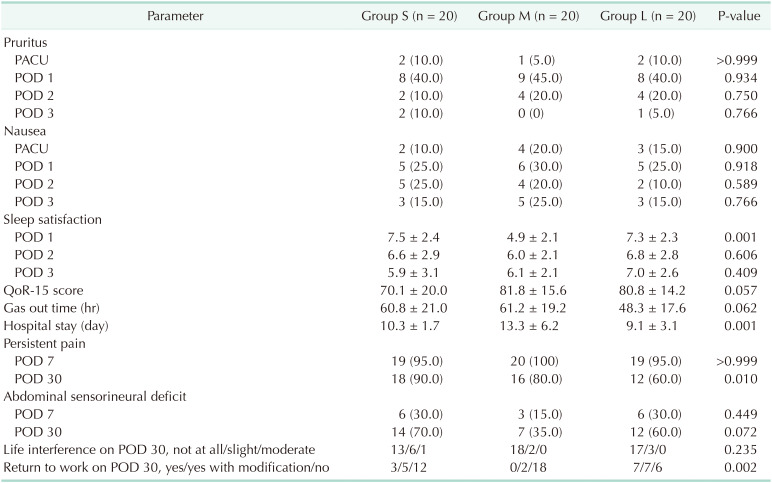




 PDF
PDF Citation
Citation Print
Print



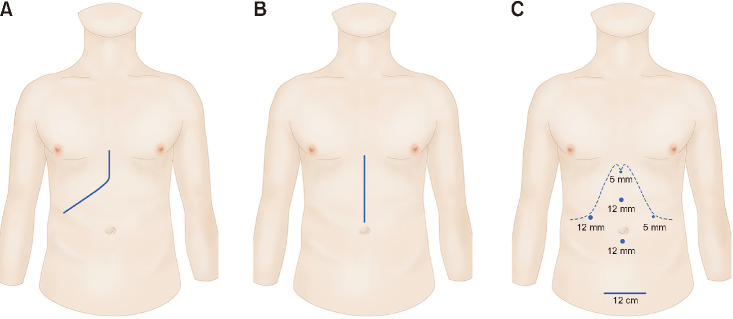
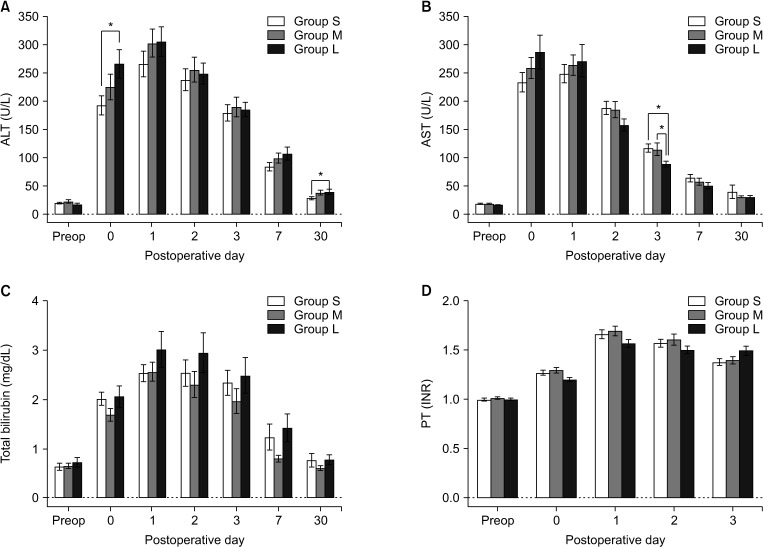
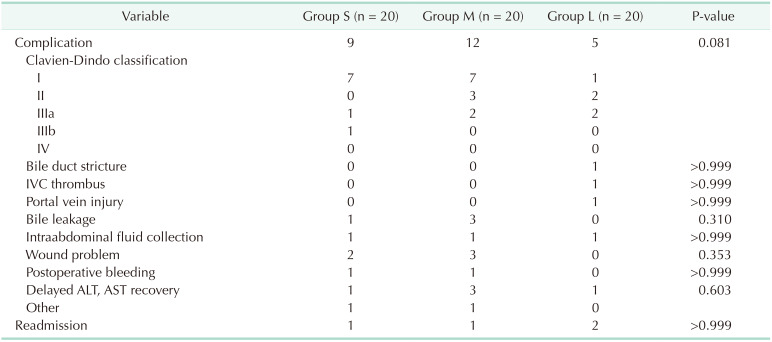
 XML Download
XML Download